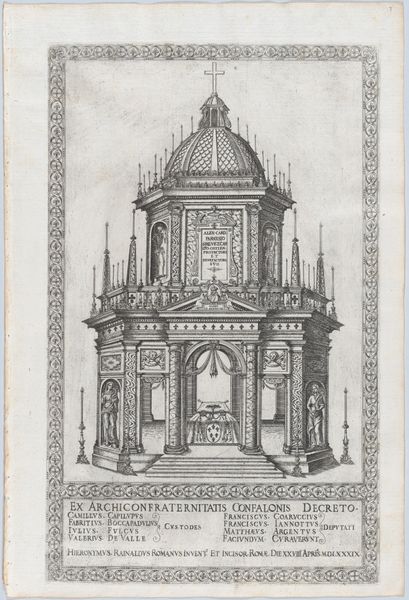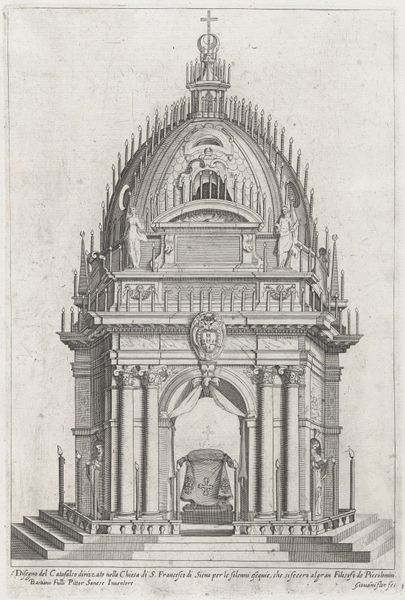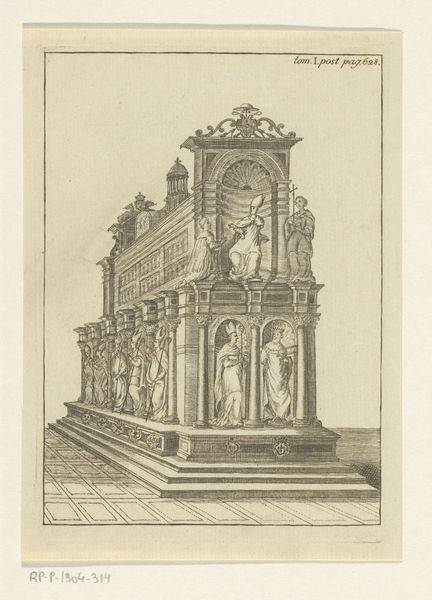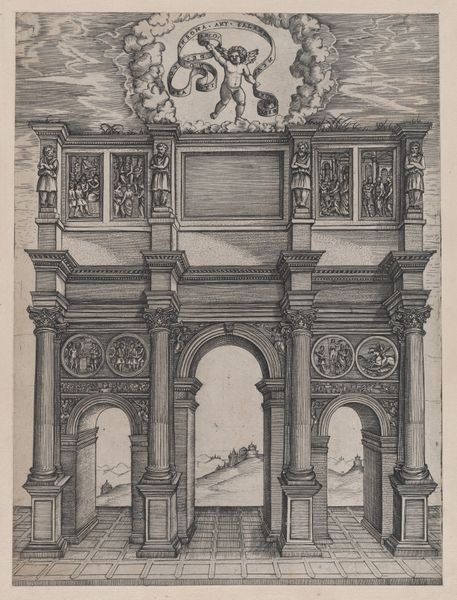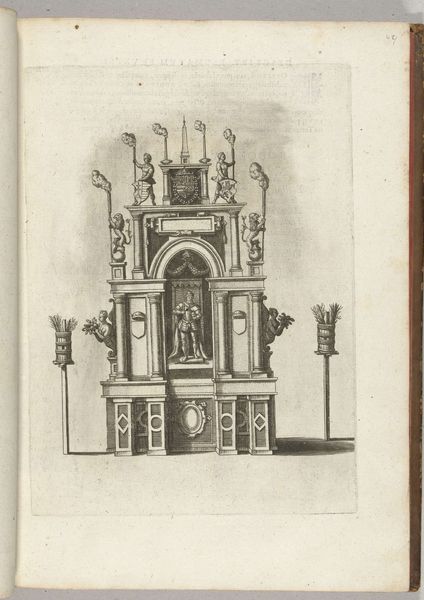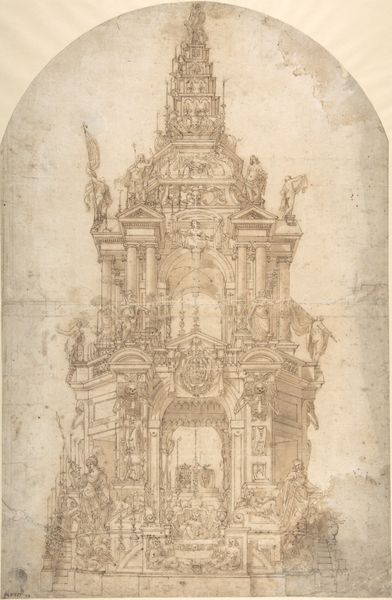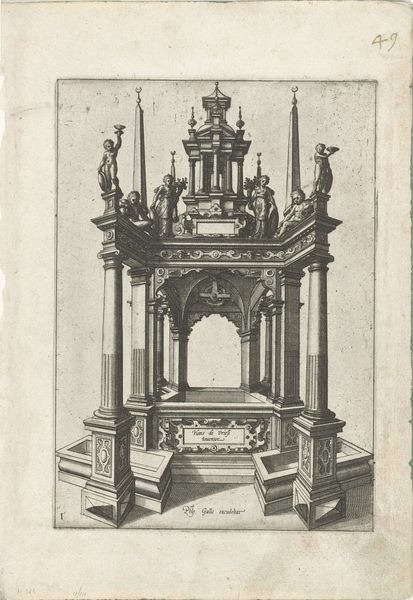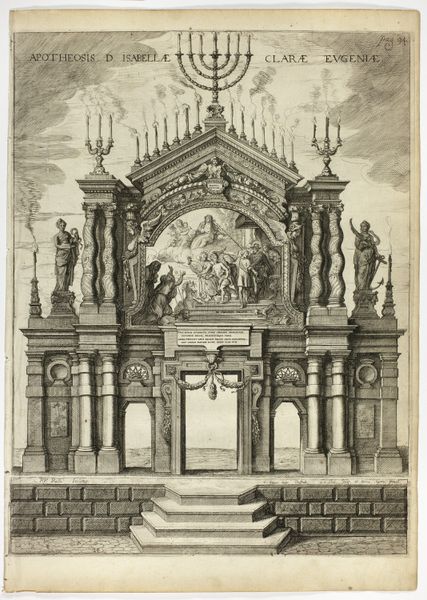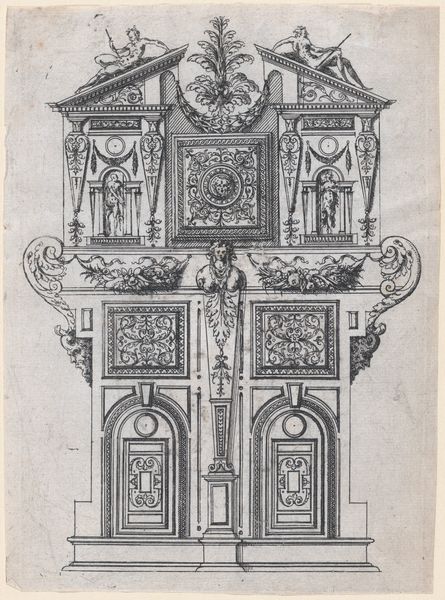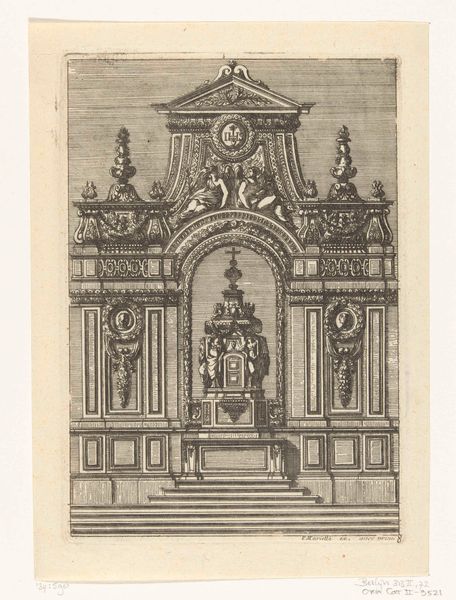
Catafalque for Pope Sixtus V; from 'Libro De Catafalchi, Tabernacoli, con varij designi di Porte fenestre et altri ornamenti di Architettura' 1591
0:00
0:00
drawing, print, engraving, architecture
#
drawing
# print
#
history-painting
#
italian-renaissance
#
engraving
#
architecture
Dimensions: Sheet: 16 3/16 × 10 15/16 in. (41.1 × 27.8 cm) Plate: 14 5/8 × 9 13/16 in. (37.2 × 25 cm)
Copyright: Public Domain
Curator: Let's take a look at "Catafalque for Pope Sixtus V," an engraving by Giovanni Maggi dating back to 1591, currently housed at The Met. What's your initial reaction to this image? Editor: Woah, it’s like a blueprint for a heavenly steampunk temple! It's so intricate. I'm immediately drawn to the level of detail—those spiraling columns and the statues... it has a simultaneously grandiose and somber feel. Curator: Precisely. Maggi created this print as part of a larger volume illustrating various temporary structures erected for papal funerals. This one was specifically for Sixtus V. Notice how Maggi employs a sharp, linear style typical of engravings. The cross-hatching gives a sense of volume, particularly to the dome, but it's essentially about line and form. Editor: I’m seeing that emphasis on the geometry now. All those receding arches…it’s almost dizzying! And those figures around the base—are they supposed to be mourners, or angelic guardians of some sort? They don't seem particularly grief-stricken. Curator: They likely represent allegorical figures, virtues perhaps, attending the deceased Pope. Consider how the architecture itself mirrors Sixtus' papacy. He was known for ambitious building projects, especially in Rome. So the elaborate catafalque, a temporary structure built for display, visually reinforces that legacy. The dome, in particular, might evoke St. Peter’s, underscoring his ambition and connection to the church’s architectural power. Editor: Ah, now the sheer audacity of it strikes me differently! It's like they are making a bold claim on Sixtus' afterlife, cementing his earthly achievements even in death. Almost celebratory, right? I love that contrast. It gives me the sense that the engraving is less about death than the immortal idea of power, influence, legacy. Curator: I see your point entirely. Perhaps, through this ephemeral architecture immortalized in print, Maggi invites us to contemplate not only mortality, but also the enduring impact one individual can have on the world. Editor: Right, and the way everything funnels the eye upward--that upward sweep invites not only awe, but a question of whether anything so meticulously planned can exist eternally. Curator: Beautifully put.
Comments
No comments
Be the first to comment and join the conversation on the ultimate creative platform.
